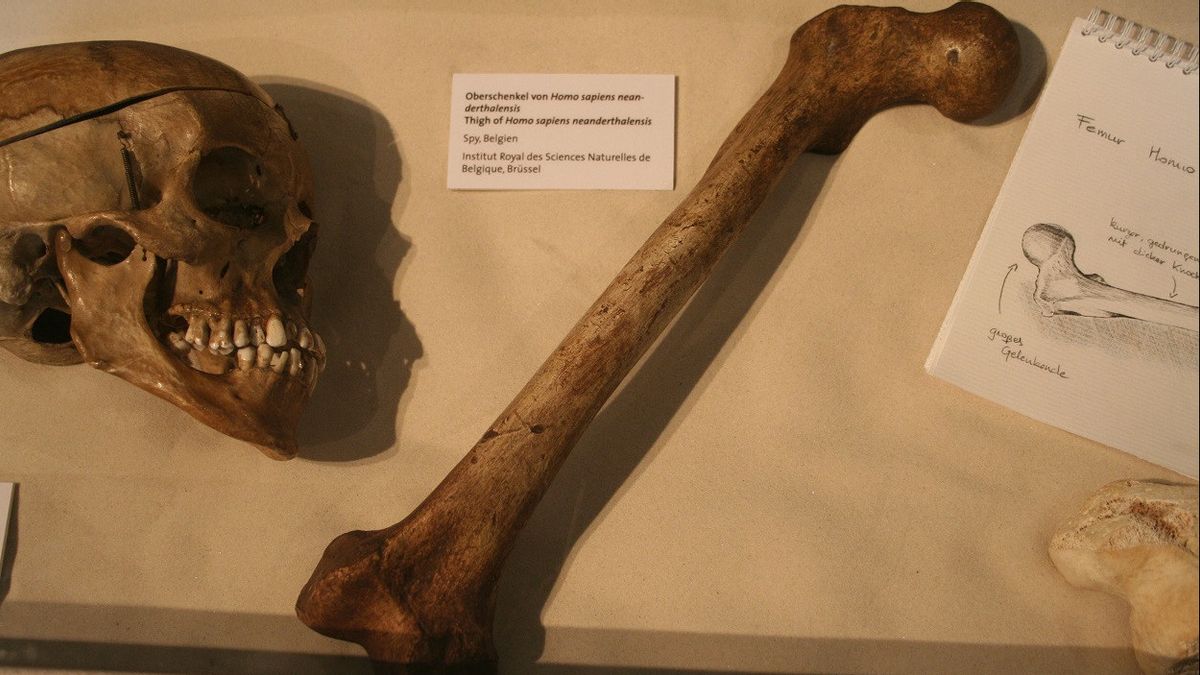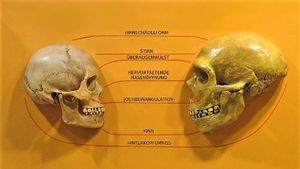JAKARTA - Neanderthal ancient human tracks are believed to belong to some of the last surviving species in Europe that are thousands of years older than expected, according to a new study.
When exactly the Neanderthals, our closest ancestors, disappeared in Europe is hotly debated. They are thought to have become extinct about 40,000 years ago, not long after modern humans migrated out of Africa.
Previous studies of the remains found in Spy Cave, Belgium have placed the specimens around 37,000 years ago, which would have made their owners some of the newest Neanderthals alive in Europe.
But experts from Belgium, Britain, and Germany suspect that the age of previously analyzed specimens is unreliable due to contamination.
Using a process known as liquid chromatographic separation, the experts extracted one amino acid from the Neanderthal remains. They used this to age and reanalyze the remains, which are now free of contaminants such as glue.
Experts say contamination from the remains means that they have been dated as very young by up to 10,000 years. Experts then estimated the remains found at two other Belgian sites, Fonds-de-Forêt and Engis, and found them to be about the same age as those found in the Spy Cave.
"Analyzing the ages of all these Belgian specimens is very interesting because they play a major role in the understanding and definition of Neanderthals," said Grégory Abrams, an archaeologist at Belgium's Scladina Cave Archeology Center, in a statement.

Based on this latest radiocarbon date, experts estimate that Neanderthals disappeared from the region much earlier than previously thought, around 44,200 to 40,600 years ago.
"This new study gives us more clues about when Neanderthals went extinct in Europe," said the leading study author Thibaut Devièse, a professor at Aix-Marseille Université, told CNN by email.
Devièse says the more accurate date for these Neanderthal specimens answers one important question but also opens up new questions, such as how long did Neanderthal hominids and early modern humans overlap?
"We now know more precisely when Neanderthals disappeared in Europe, but we now need to confirm with the same robust method when anatomically modern humans arrived to explain how long these two species lived together," he said.
"There is some controversy about the recent appearance of Neanderthals in Western Europe and in particular for some individuals from Spy Cave," he added.
The research is published in the journal 'Proceedings of the National Academy of Sciences'.
SEE ALSO:
"Dating is very important in archeology, without a reliable chronological framework, we can't really be sure of understanding the relationship between Neanderthals and Homo sapiens when we moved to Europe 45,000 years ago and they started to disappear," said the Professor from the University of Oxford, Tom Higham who is also the research director for PalaeoChron.
"That's why this method is so attractive because it provides a much more accurate and reliable date," added Higham.
The English, Chinese, Japanese, Arabic, and French versions are automatically generated by the AI. So there may still be inaccuracies in translating, please always see Indonesian as our main language. (system supported by DigitalSiber.id)


















